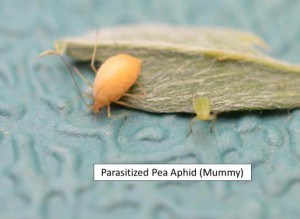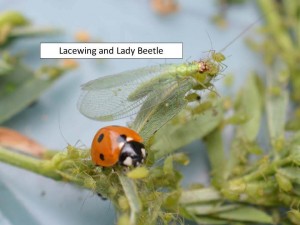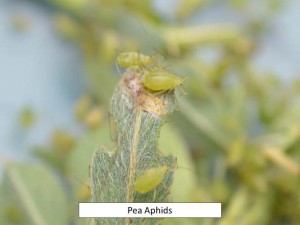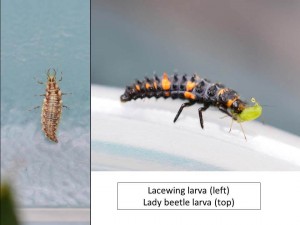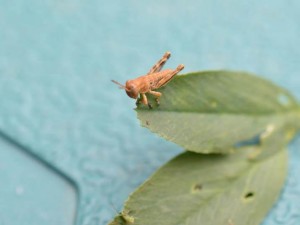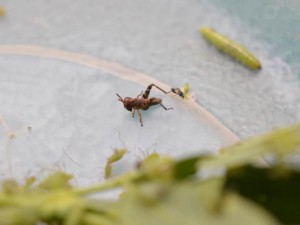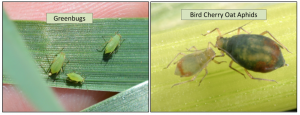Wet weather has kept equipment out of the fields and has allowed the insects to flourish. Fortunately, the plants are also doing well and tolerating these healthy populations of pests. When these fields dry out and are able to be swathed, there will probably be relatively significant populations of alfalfa weevil larvae and adults still present. They are accumulated into the windrows at cutting; they will feed on the stems under the windrows until the hay is picked up. This causes the characteristic stripping in the fields where the regrowth under the windrows is chewed off while the areas beside the windrows grow back. Once the hay is removed, the adult weevils will exit the fields and no longer be a problem. Weevil larvae in north central Kansas on 7 May were 93% 3rd instar, and 7% 1st or 2nd instar. There are many pupae and adults also.
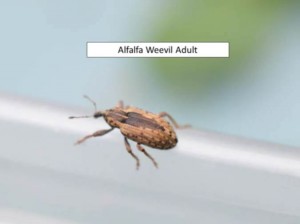
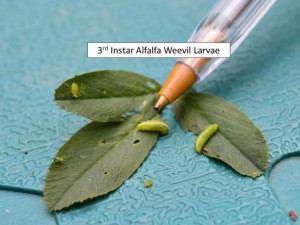
There are significant populations of aphids, mainly pea, in these central Kanas alfalfa fields as well. Swathing will remove this problem, but there are many beneficial insects helping to regulate these aphids, and hopefully they will stay around after swathing to help manage any other aphids and/or potato leafhoppers that may show up (no leafhoppers detected yet).
Some small grasshoppers were also noted. Usually, grasshoppers do better in drier conditions, but not always. So be aware that grasshoppers are present now and eggs will continue to hatch for the next month.
—Dr. Jeff Whitworth and Dr. Holly Schwarting
